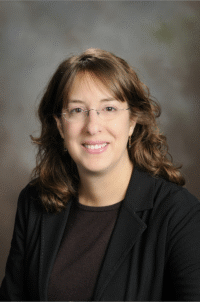
Introduction to Arsenic in Groundwater
Arsenic in the subsurface may be related to naturally occurring minerals or human activities; natural or human-created conditions may mobilize arsenic in groundwater. Geochemical conditions (e.g., redox and pH) play an important role in controlling both arsenic release and subsequent mobility in groundwater. For example, arsenic-rich sulfide minerals can release soluble arsenic to groundwater under oxidizing conditions. In contrast, arsenic sorbed to, or incorporated into, the mineral structure of metal-(hydr)oxide minerals are a potential source of arsenic to groundwater in reducing environments. Geochemical conditions may be temporally and spatially variable within a hydrogeologic system, impacting arsenic mobility and affecting the distribution of arsenic in groundwater and in wells.
Some Topics:
- Sources of arsenic to groundwater
- Arsenic geochemistry
- Case studies illustrating sources of arsenic to groundwater, geochemical mechanisms, and their manifestation in water chemistry
This 90-minute webinar will provide practitioners with an introduction to common sources of arsenic in groundwater and a comprehensive (and easily-understood) discussion of the geochemical conditions that affect arsenic mobility in groundwater systems. Several field studies will illustrate practical tools to identify arsenic sources and the conditions under which it is mobilized.
Attendees are invited to actively participate during this live and interactive on-line web seminar. Discussion is planned following the webinar for those who want to continue the session. Bring your questions to the webinar and present them to the instructors and other participants for exploring the best solution.
| Fee: |
299.00 USD Per Computer Site (unlimited participants per site).
|
| Instructors: |
Madeline Gotkowitz, PG. and Madeline Schreiber, PhD.
|
Pay one site (one computer) registration fee and an unlimited number of participants from your organization can attend at that site.
1.0 Professional Development Hour (1.0 PDH) for each verified attendee will be available as a Course Completion Certificate from Northern Illinois University.
Attendees will be invited to actively participate during this live and interactive on-line web seminar. Discussion is planned following the webinar for those who want to continue the session. Bring your questions to the webinar and present them to the instructor and other participants for exploring the best solution.
Instructor Bios
 Madeline Gotkowitz
Madeline Gotkowitz
Hydrogeologist, Wisconsin Geological and Natural History Survey
Associate Professor, University of Wisconsin – Extension
Madeline Gotkowitz is a research scientist at the Wisconsin Geological and Natural History Survey, where her work focuses on regional groundwater flow and transport modeling, subsurface fate and transport of human enteric viruses, and flow and transport across aquitards. Gotkowitz’s field-based investigations of arsenic in groundwater address conditions in surficial and bedrock aquifers, and the affect of well disinfection on arsenic release. Gotkowitz holds a B.A. in Environmental Sciences from Smith College and an M.S. in Hydrology from New Mexico Institute of Mining and Technology.
 Madeline Schreiber
Madeline Schreiber
Associate Professor, Geosciences
Virginia Tech University
Madeline Schreiber’s research in chemical hydrogeology involves analysis and quantification of chemical and biological processes that impact contaminant transport. Over the past 10 years, Schreiber and her students have focused on biotransformation of both organic and inorganic species by subsurface microorganisms, adsorption of arsenic species (organic and inorganic) to subsurface materials, and release of trace elements from minerals during oxidative and reductive dissolution. Her work has been funded by the National Science Foundation, the U.S. Department of Agriculture, the National Institutes for Water Research, and private foundations. Schreiber received PhD and MS degrees from the University of Wisconsin-Madison and a BS degree from Yale University.